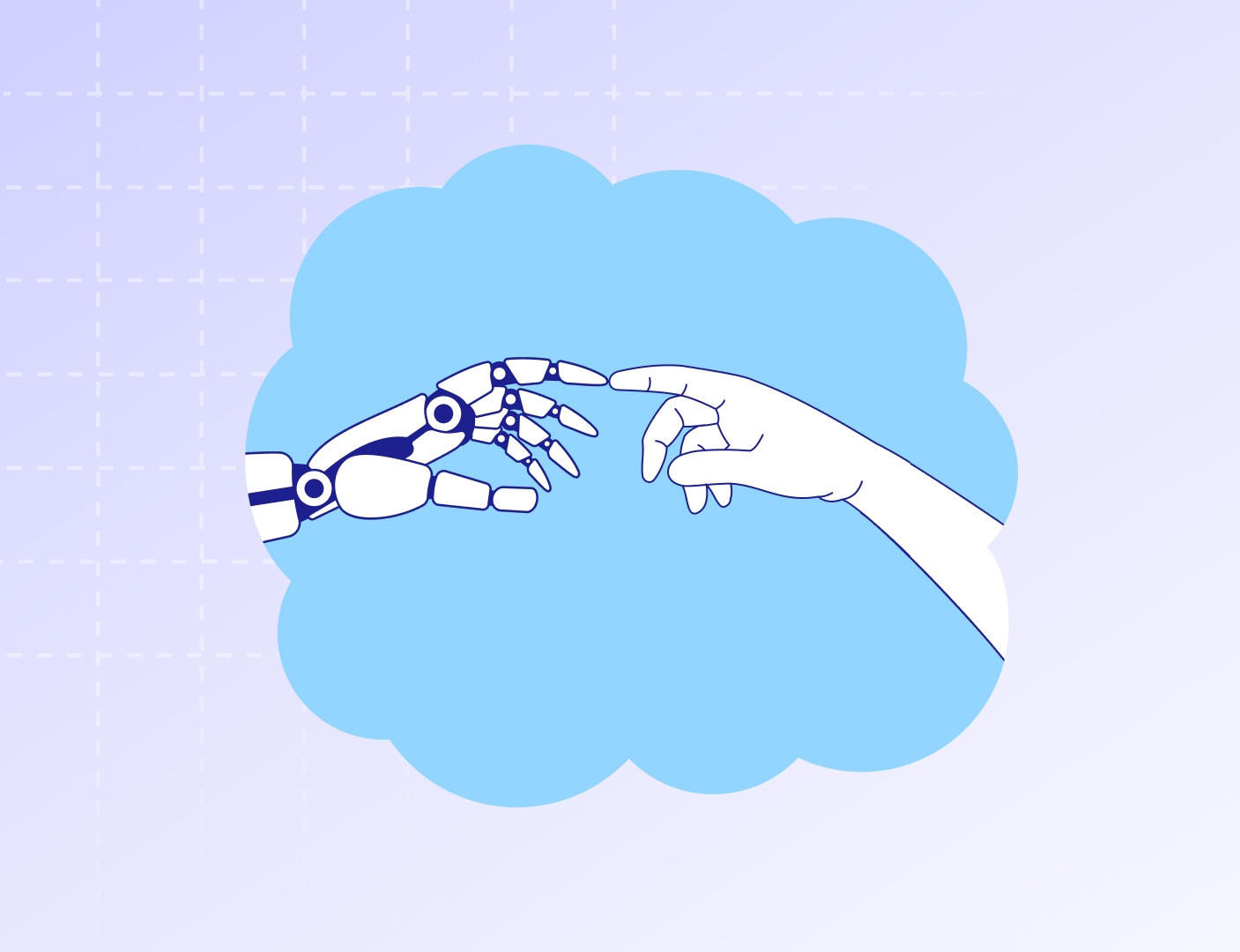In a nutshell:
- Predictive AI uses historical data to forecast future outcomes, while Generative AI creates new content.
- Predictive AI is used for functions like risk management and sales forecasting, while Generative AI is used for content creation and product design.
- Both types of AI have their unique strengths and applications, and can complement each other in certain scenarios.
- Businesses should choose the right AI based on their industry, business needs, resources, and data quality.
- The future of AI in business looks promising, with advancements in both predictive and generative AI and the potential for hybrid approaches and new ecosystems to emerge.
The clash of the algorithms. The duel of the data. The binary brawl of the century. It's time for a faceoff between predictive AI and generative AI, and this battle will reveal their differences and strengths.
That's a dramatic way to compare these technologies, and really, they are better viewed as partners than opponents. Each type of AI has its own unique capabilities and applications. Two main types of AI – predictive AI and generative AI – have gained significant attention in recent years for their potential to transform businesses.
Here's the key takeaway: Predictive AI uses historical data to forecast future outcomes, while Generative AI creates new content.
Of course, if you're here, you probably want a deeper explanation than that. To be sure, there are more differences between predictive and generative AI, and understanding what makes each unique can help business owners and decision-makers solve complex challenges. AI technologies can also play a role in driving growth and innovation in your business.
This technology is extremely complex. Let’s explore the different types of AI, how they can be utilized in business, and what the future may hold for artificial intelligence going forward.
-

- AI seems to be everywhere, but what are the real differences between generative and predictive AI in a business context? (Image source: Steve Johnson on Unsplash)
Understanding the Basics
AI, or Artificial Intelligence, refers to the simulation of human intelligence processes by machines, particularly computer systems. These processes include learning, reasoning, and self-correction. In simpler terms, AI involves creating machines that mimic or replicate human behavior or thought processes.
The term “AI'' was first coined in the mid-1950s. It was popularized by Alan Turing, who proposed the idea of a universal machine that could mimic any human brain's computations. While the human-like robots of science fiction are still a ways off, current developments in the field of AI have been incredible. Fast forward to the 21st century and we can see how AI has seeped into various business segments – from customer service to marketing, logistics to decision-making.
The primary purpose of AI in business is to simplify complex tasks, improve efficiency, and enable better decision-making. AI can analyze vast amounts of data more quickly and accurately than a human ever could, providing businesses with valuable insights that can drive growth and profitability. Not only does it lead to better results in these sorts of tasks, it frees up human employees to work on more important jobs.
The Role of AI in Data Analysis and Decision-Making
AI plays a pivotal role in data analysis and decision-making in businesses. Machine learning algorithms can sift through vast volumes of data to identify patterns and trends that might go unnoticed by humans. This ability can help businesses make more informed decisions based on data rather than intuition or experience. AI can also automate routine tasks, freeing up employees to focus on more strategic, high-value activities.
Not only that, AI can provide predictive analytics – using historical data to predict future trends – and prescriptive analytics – suggesting possible actions to solve a problem or take advantage of an opportunity. These are both extremely valuable assets in a business situation.
Predictive AI
Predictive AI, as the name suggests, leverages artificial intelligence, such as machine learning or even deep learning and neural networks, to make predictions about future events or trends with a certain level of confidence. Essentially, it uses current and historical data to forecast what could happen next.
This type of AI works by identifying patterns in existing training data sets and then applying statistical algorithms and machine-learning techniques to predict future outcomes. For example, predictive AI can forecast customer behavior, market trends, or supply chain disruptions.
The use cases for predictive AI in business are too numerous to list in full. It can help businesses forecast sales, anticipate customer needs, optimize supply chains, develop intelligent automation, and reduce risk. Moreover, it can empower businesses to make proactive, data-driven decisions, thereby improving their competitiveness and profitability.
Generative AI
Generative AI, on the other hand, is a technology that is capable of creating new content or data that has never existed before. This includes everything from AI-made music, art, and design to written content and even scientific discoveries.
Generative AI operates by learning from a dataset and then creating new, unique data based on what it has learned. For instance, a generative AI model can be trained on millions of pictures of human faces, and then proceed to generate new images of human faces that do not exist in real life.
The key benefits of using generative AI in business include content creation, product and design innovation, and problem-solving. It can, for example, generate large volumes of high-quality content in seconds, saving businesses substantial time and resources. It can also create novel product designs or find innovative solutions to complex problems.
Predictive vs. Generative: Spotting the Differences
Predictive and generative AI, while both powerful tools, serve different functions and have varied applications. Predictive AI tends to be more focused on producing actionable forecasts based on existing data, while generative AI's strength lies in creating something entirely new.
One critical difference between the two lies in their respective applications in business. Predictive AI is widely used in functions like risk management, sales forecasting, and customer retention. In contrast, generative AI finds its strength in creative fields like product design, content creation, and research and development. While they both use the principles of AI, they couldn’t be more different in function and use.
That said, predictive and generative AI can also complement each other in specific scenarios. For example, predictive AI could be used to forecast market trends, while generative AI could then use those trends to create innovative product designs that customers will love.
AI Results in the Real World
To better showcase AI’s potential, let’s look at some of the actual uses for the technology in today’s business landscape.
Predictive AI
The online streaming service Netflix uses predictive AI technology to make personalized recommendations for its users. By analyzing the user's watch history and preferences, predictive AI can suggest new shows or movies the user may enjoy, enhancing the overall user experience. They’ve even utilized AI to optimize their thumbnails, making predictions as to what image is most likely to entice viewers to watch something.
In the digital marketing industry, predictive AI has been instrumental in analyzing customer behaviors and predicting future trends. This allows businesses to tailor their marketing campaigns to better engage their customers and meet market demands.
Generative AI
Generative AI has been employed by brands such as OpenAI's GPT-3, which creates human-like text based on the input it receives. This can be used for automating the creation of written content, from writing articles to generating responses to customer inquiries, thus improving efficiency and productivity in businesses.
It has also been leveraged in the architecture industry, where AI systems can generate new building designs based on a set of predefined rules and constraints, leading to innovative design solutions that might not have been considered otherwise.
Choosing the Right AI for Your Business
Identifying the right AI for your business starts with a deep understanding of your business needs and challenges. While predictive AI might be the perfect solution for businesses focused on predicting market trends to capitalize on future market needs, generative AI is ideal for helping bolster a business’ design and aesthetics or pursue creative needs.
Choosing between predictive and generative AI should be influenced by the nature of your industry. For example, industries that rely heavily on forecasting, such as finance and logistics, would greatly benefit from predictive AI. On the other hand, industries that thrive on innovation and creativity, like entertainment and design, might find more value in the capabilities of generative AI.
Additionally, the size and resources of your business can also be factors in your decision. For smaller businesses or startups, predictive AI might be more beneficial initially in order to identify potential growth opportunities and minimize risks. Larger corporations with more extensive resources may have the ability to experiment with and fully utilize both types of AI.
It is also essential to consider the skill set of your team. Implementing AI in business requires a blend of skills, including data analysis, computer science, and business acumen. If your team lacks these skills, you may need to invest in training or hire new team members with the necessary expertise.
Lastly, the decision should take into consideration the state of your data. AI is only as good as the data it uses. Thus, the quality, quantity, and type of data your business has access to can determine whether predictive or generative AI will be more effective.
The key to implementing AI in your business lies in understanding its potential benefits, identifying its potential barriers, and deploying it strategically to address your unique challenges. Depending on your business needs, you might decide to implement either predictive or generative AI, or in some cases, a combination of both.
The Future of AI in Business
The future of AI in business looks promising. Experts predict rapid advancements and growth in AI technology, meaning more and better results when using either type of AI. Both predictive and generative AI are expected to have profound impacts on various industries, transforming business operations, decision-making, and innovation.
In the coming years, AI is poised to open up new possibilities for businesses in virtually every industry. Predictive AI could help companies not only anticipate future trends but to start shaping those trends themselves. By generating detailed forecasts, businesses could identify emerging market opportunities even before they become apparent to competitors, providing them with a substantial edge.
Generative AI is predicted to make even greater strides in fields like content creation and design. It could make processes like prototyping faster and less expensive, thereby accelerating the pace of innovation and helping companies to stay ahead in fast-evolving markets. Some experts even envision a future where generative AI would be able to come up with novel business strategies or product ideas, potentially leading to entirely new business models or industries that most people would never even conceive of by themselves.
Moreover, the advancements in AI technology are not expected to be limited to predictive and generative AI alone. Hybrid approaches – combining aspects of both types – could also emerge, maximizing the strengths and minimizing the weaknesses of each type. This would offer businesses unprecedented flexibility and capabilities, enabling them to adapt and thrive in an increasingly complex and competitive business environment.
It’s also likely that the future will not only be about the AI technologies themselves but also about the ecosystems that will evolve around them. This could involve new types of partnerships between businesses and AI providers, regulatory frameworks, and even societal changes as AI becomes more ingrained in our daily lives. Businesses that understand and adapt to these broader trends could achieve a level of success that today's AI applications can only hint at.
Embracing AI in All its Forms
Understanding the key differences between predictive and generative AI is crucial for businesses. Whether it's forecasting future trends, generating new creative content or discovering innovative solutions, AI has the potential to drive growth and development in businesses.
The critical takeaway for businesses is to embrace both forms of AI. You don’t have to make a choice between one or the other when you can simply use both as complementary technologies. This allows both the technology and your business to unleash their true potential. As AI continues to evolve, businesses that effectively leverage its power will undoubtedly have a competitive edge.
If you're ready to take the leap into AI, get in touch or try a free trial of Pecan now.




